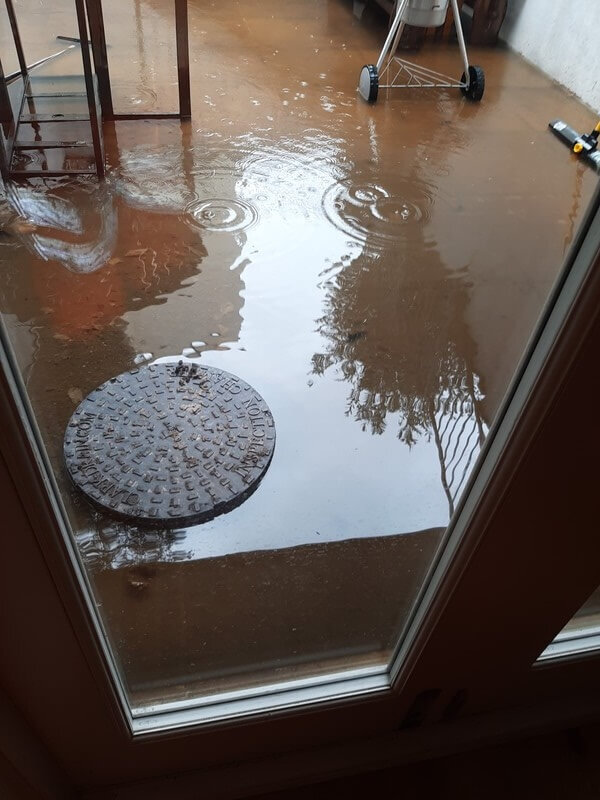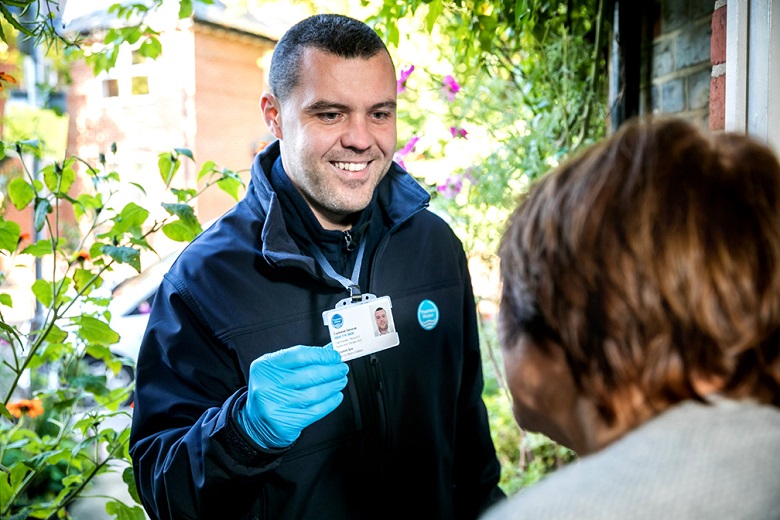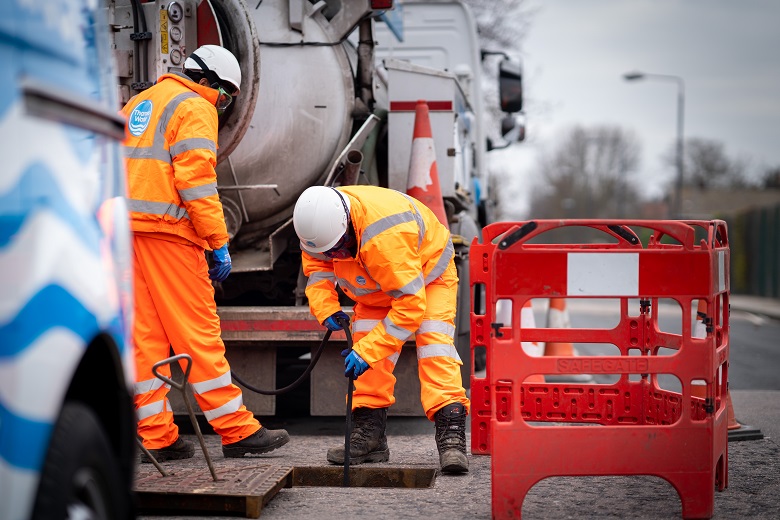What to do during sewer flooding
A step by step guide to sewer flooding
We’re really sorry if you’ve been affected by sewer flooding. We understand just how unpleasant and distressing this can be.
When sewer flooding happens, you want it sorted as fast as possible. Watch our video or read our guide below to find out what to do.
We've also got advice on how to stay safe during sewer flooding.

Step 1
Identify the type of flooding
Learn about the different types of flooding and which organisations manage each one. This will help make sure you get the support you need quickly.
There are four main types of flooding - river, road, groundwater and sewer. We can only help you with sewer flooding.
Once you've established it's sewer flooding, find out whose responsibility it is to repair it.

Step 2
Contact us
If your home or business is currently affected by sewer flooding, call us on 0800 316 9800.
For external flooding, we’ll get to you within 24 hours (48 when we're exceptionally busy). For internal flooding, we'll get to you within 8 hours (12 when we're exceptionally busy).
If your home or business was affected by flooding that has now cleared, fill in our flooding questionnaire.

Step 3
Contact your insurer
If you don't tell your insurer about sewer flooding, you could be breaching the terms and conditions of your policy. This could make it invalid in the future, so make sure to contact them as soon as you can. Take photos and videos to support your claim too.
Your insurer can also provide support by arranging a professional clean and replacing damaged items. They can even help you find a place to stay if needed.

Step 4
Engineer visit
If we can, we'll find and fix the issue on the first visit. Our engineer will discuss their findings and any next steps with you.
We'll help you start cleaning up. We can also disinfect hard areas outside, like patios and driveways. We recommend you use a professional for a full clean up after sewer flooding.

Step 5
Further repair work
Sometimes we're unable to fix the issue on our first visit. We might have to come back to clean, get specialist equipment, wait until the water subsides or refer to a third party.
We usually leave the sewers free flowing, so you can use your toilet as normal. If this isn't possible, we may have to put in a temporary solution to prevent further flooding.

Step 6
Compensation
If the sewer flooding occurs inside your house, we'll pay you compensation automatically. If you've suffered severe external sewer flooding, you must claim within three months. Find out more about sewer flooding compensation.
Talk to your insurance company about damages to personal belongings, appliances and furniture.
Health and safety
Make sure you protect your health when dealing with sewer flooding. Avoid contact with flooded areas, keeping children and pets away. The length of time you should avoid areas depends on surface and season:
| Season | Turf/clay | Soil/sand/shingle/bark |
| Spring | 13 days | 20 days |
| Summer | 6 days | 9 days |
| Autumn | 13 days | 20 days |
| Winter | 18 days | 11 days |
Please don't worry about your drinking water. The pipes that carry it are sealed and kept under pressure. Even if there's a leak, they'll force out clean water and won't let anything in. This means it'll be safe to use.
You should also:
- Wash your hands frequently
- Decontaminate your shoes with a mild disinfectant
- Throw out any food that may have been in contact with flood water. This includes vegetables in your garden
- Don't grow any crops on flooded soil for a further 12 months
- Speak to a gas and/or electricity supplier before using any appliances submerged in water
- Call your doctor straight away if you suffer any symptoms like diarrhoea or vomiting